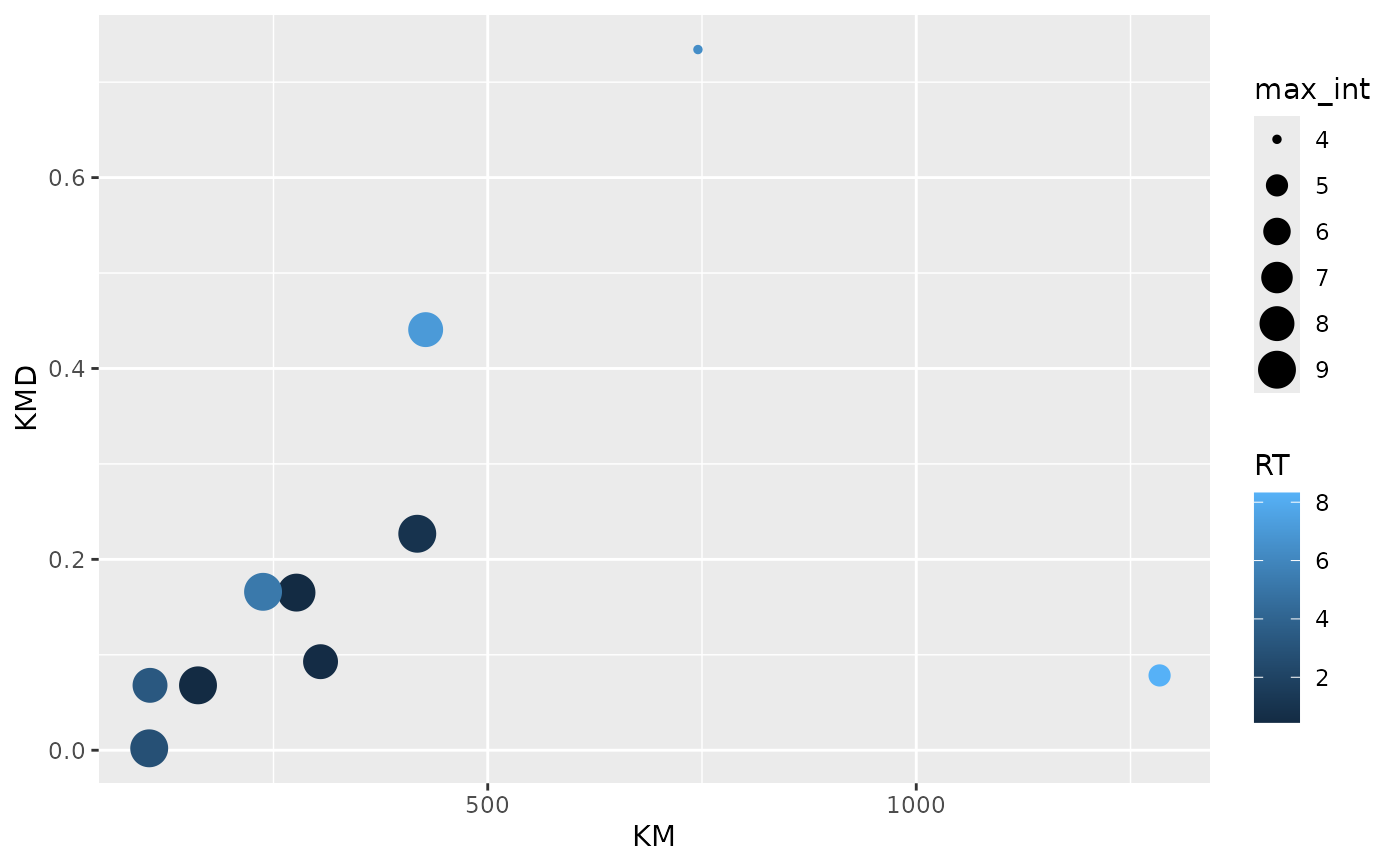Calculate the Kendrick mass for a given mass (or m/z) and repeating unit.
The Kendrick mass is a rescaled mass, that usually sets CH2 = 14 but other
repeating units can also be used. It is usefull for the visual identification
of potential homologues. See the References section for more information.
The Kendrick mass is not to be confused with the Kendrick mass defect
(KMD, calc_kmd) and
the nominal Kendrick mass (calc_nominal_km).
References
Edward Kendrick, Anal. Chem. 1963, 35, 2146–2154.
C. A. Hughey, C. L. Hendrickson, R. P. Rodgers, A. G. Marshall, K. Qian, Anal. Chem. 2001, 73, 4676–4681.
Examples
# Calculate the Kendrick masses for two measured masses with
# CH2 as the repeating unit.
# See Hughey et al. in the References section above
calc_km(c(351.3269, 365.3425))
#> [1] 350.9346 364.9346
# Construct a KMD plot from m/z values.
# RT is mapped to color and the feature-wise maximum intensity to size.
# Note that in the publication by Hughey et al., the nominal Kendrick mass
# is used on the x-axis instead of the exact Kendrick mass.
# See ?calc_nominal_km.
toy_metaboscape %>%
dplyr::group_by(UID, `m/z`, RT) %>%
dplyr::summarise(max_int = max(Intensity, na.rm = TRUE)) %>%
dplyr::ungroup() %>%
dplyr::mutate(KMD = calc_kmd(`m/z`),
KM = calc_km(`m/z`)) %>%
ggplot2::ggplot(ggplot2::aes(x = KM,
y = KMD,
size = max_int,
color = RT)) +
ggplot2::geom_point()
#> `summarise()` has grouped output by 'UID', 'm/z'. You can override using the
#> `.groups` argument.

